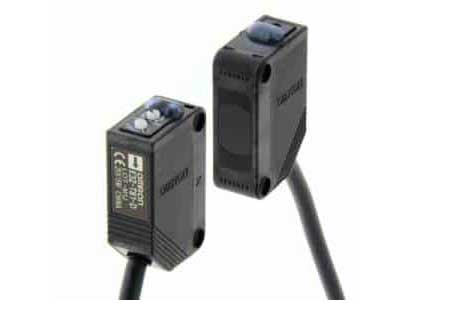What is the Output of a Photoelectric Sensor?
Key Takeaway
The output of a photoelectric sensor can vary widely, including options like analog signals (4-20 mA, 1-10V), and digital outputs such as PNP and NPN transistors, or relay outputs. The choice depends on the requirements of the control system it integrates with, offering flexibility in automation applications.
Basics of Sensor Outputs
Understanding the various outputs of photoelectric sensors is crucial for effectively integrating these devices into an automation system. Omron, a leading brand in this field, offers a range of sensors each designed to meet specific industrial needs. Let’s explore how these outputs dictate communication with control systems and impact overall functionality.
Photoelectric Sensors convert optical signals into electrical ones, which can broadly be categorized into analog or digital formats. Analog outputs, such as 4-20 mA or 0-10V, provide a continuous range of data that reflects variations in light intensity detected by the sensor. This format is ideal for applications requiring precise monitoring of changing conditions. Digital outputs, including PNP, NPN, and relay, offer binary signals that indicate the presence or absence of objects, suitable for straightforward detection tasks.

Analog vs. Digital Outputs Explained
Analog sensors are invaluable in contexts where detailed measurement of distance or object characteristics is necessary. They provide a continuous signal that can be finely interpreted to gauge subtle changes within the environment. On the digital side, PNP and NPN outputs are common in industrial environments; PNP sensors are typically used when a positive signal is needed to trigger an action, whereas NPN sensors are utilized for creating a ground connection in response to detection. Relay outputs, acting as switches, are capable of handling higher power loads, making them useful for direct control of machinery or lighting systems.
How Output Types Affect Sensor Performance
The choice between analog and digital output Photo Sensors affects a sensor’s performance and the complexity of the system. Analog outputs require more complex data processing but offer greater flexibility in monitoring and control, making them ideal for nuanced applications. Digital outputs provide straightforward, robust signals that excel in high-speed, binary detection tasks—crucial for operations like manufacturing and packaging.
Choosing the Right Output for Your Needs
Selecting the optimal output type for a photoelectric sensor requires a thorough understanding of both your system’s specific needs and the conditions under which it will operate. When precision and the ability to detect slight variations are paramount, an analog output is often the preferred choice. This is because analog sensors can provide a continuous, scalable signal that corresponds directly to variations in light intensity, making them ideal for applications where minute adjustments in detection can have significant impacts on process outcomes.
On the other hand, digital outputs, which switch states between on and off, are best suited for applications that require straightforward, binary decision-making processes. These are typically used when the primary requirement is to discern whether an object is present or absent without the need for gradient measurement. Before deciding, it’s essential to consider the specific electrical requirements of your system and what level of data processing is necessary. Digital sensors tend to be easier to integrate and maintain but check whether your system’s complexity and the nature of the tasks justify the need for the more nuanced data provided by analog sensors. Thus, carefully analyzing the operational context and technical demands will guide you to the appropriate choice, ensuring that the sensor enhances system efficiency and reliability.
Common Output Issues and Troubleshooting Tips
Even with the ideal setup, output issues can arise, ranging from wiring errors to interference that affects signal integrity. For analog sensors, using shielded wiring and avoiding high-power lines can help minimize electromagnetic interference. For digital sensors, ensure the load is compatible with the output type—PNP, NPN, or relay—to avoid errors and ensure reliable operation. Regular maintenance and calibration are also crucial.
Conclusion
The right output type from a photoelectric sensor ensures that your automation system functions seamlessly and efficiently. Whether you choose analog for detailed data collection or digital for robust, straightforward operation, understanding the strengths and applications of each output type will help you optimize your industrial processes. By matching the sensor output to the specific needs of your application, you can achieve reliable and precise control within your operational environment.
